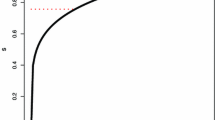Abstract
This paper considers what happens when 'monthly' data, which can be modelled by a linear transform function together with a noise or error term, are aggregated to form 'annual' data. It is assumed that in the monthly model noise and input are independent, and it is shown that if the parameters of the annual model are so chosen that the input and noise are uncorrelated at all lags, then the parameters are functions of the structure generating the input series. However, if the annual noise and input are uncorrelated, the resulting model leads to the same estimate of gain and average lag as the monthly model. It is pointed out that this is at variance with reported empirical studies where annual models lead to much greater average lags. An example is given to show that the explanation may lie in the over-simplification of annual models. It is frequently assumed that a monthly Koyck model implies a similar annual model. This is not so, and the omission of a lagged term in the input series accounts for the bias in the average lag.
Similar content being viewed by others
Author information
Authors and Affiliations
Rights and permissions
About this article
Cite this article
Sasieni, M. The Effects of Combining Observation Periods in Time Series. J Oper Res Soc 33, 647–653 (1982). https://doi.org/10.1057/jors.1982.141
Published:
Issue Date:
DOI: https://doi.org/10.1057/jors.1982.141




